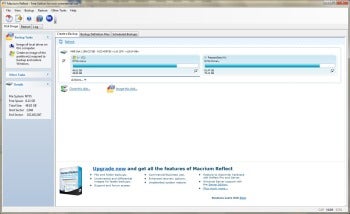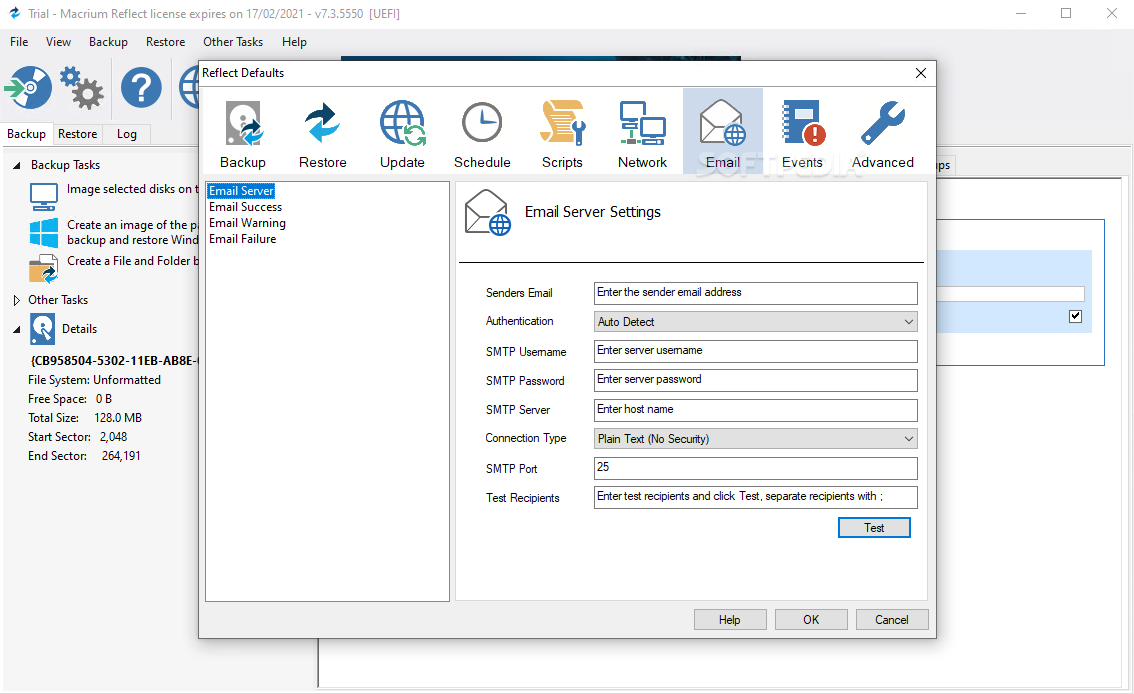

- #MACRIUM REFLECT FREE EDITION CLONE DOES NOT BOOT HOW TO#
- #MACRIUM REFLECT FREE EDITION CLONE DOES NOT BOOT GENERATOR#
- #MACRIUM REFLECT FREE EDITION CLONE DOES NOT BOOT DRIVER#
- #MACRIUM REFLECT FREE EDITION CLONE DOES NOT BOOT MANUAL#
- #MACRIUM REFLECT FREE EDITION CLONE DOES NOT BOOT UPGRADE#
When running the downloaded file, in the options on the top, change from the HOME Edition to FREE. Enable, Disable, Manage, Delete or Create a System Restore Point. #MACRIUM REFLECT FREE EDITION CLONE DOES NOT BOOT HOW TO#
How to Delete Some or All System Restore Points on Windows 10. How to Reinstall Windows 10 Without Losing Your Files. How to Reset or Reinstall Windows 10 Using the Cloud. 
HTML log reports are generated and can be viewed using Reflect's built in browser.
Full logging of all backup operations. Automatic disk space management for local / remote hard drives. Automatic incremental / differential images. #MACRIUM REFLECT FREE EDITION CLONE DOES NOT BOOT GENERATOR#
Includes VBScript integration and a VBScript generator for unparalleled control of the backup process. Save your backup definitions as XML files and execute them with a single click from your desktop. Windows PE 2.1 rescue CD with Windows boot menu. AES 256 bit encryption for ultimate security. Password protect images to prevent unauthorized access. Three compression levels can be selected to optimize between file size and speed. System files such as 'pagefile.sys' and 'hiberfil.sys' are not included in the image. Images (Backup files) can be separately verified or automatically verified before restore. #MACRIUM REFLECT FREE EDITION CLONE DOES NOT BOOT DRIVER#
A special driver ensures that the disk image represents an exact point in time and will not be affected by disk access that may occur during the backup process.
Disk image can be created whilst Windows is in use. Backup files can be saved to local or network drives or optical storage (CD, DVD). Track 0 (The Master Boot Record) is saved with all backups. #MACRIUM REFLECT FREE EDITION CLONE DOES NOT BOOT UPGRADE#
A hard disk upgrade can easily be performed by increasing the partition to fill the new disk. a logical partition can be restored as a bootable primary partition
Restore a partition to a different type. Create a single backup file of one or many partitions. Create a single backup file of a complete hard disk. Restore specific files or the entire backup. Password protect backups to prevent unauthorized access. Supports Incremental and Differential backups. Optionally exclude system and hidden files. Backup files can be saved to local or network drives or optical storage (CD, DVD). pst files) are backed up even when locked! Files in use by Windows (such as Outlook. Browse the backup file as a virtual FAT32 hard drive in Windows Explorer. Include and exclude filter ensures that you only backup relevant files. Create a single backup file of one or more folders on your hard disk. Using this image, you can restore the entire disk, partition, or individual files and folders in the event of a partial or complete system loss. By default, "clean" creates an empty MBR disk.With Macrium Reflect Free Edition, you'll be able to easily make an accurate and reliable image of your HDD or individual partitions. Select the disk number that you want to restore to. Note: To open a command window click the icon on the taskbar. Open a Windows command window, and type:. #MACRIUM REFLECT FREE EDITION CLONE DOES NOT BOOT MANUAL#
Consult your Motherboard user manual for information on how to do this. Please boot your rescue media in UEFI mode. That is, they will boot in both MBR and UEFI mode. Rescue media created with v or later on Windows 7/8 operating systems will be dual boot. Please see here for more information on Windows PE and the Macrium Reflect rescue Environment: Understanding Rescue CDs and the Macrium rescue environment For dissimilar hardware, Redeploy may be needed. This article assumes that, apart from the type of disk, there are no other hardware differences between the system being imaged and the system being restored to. GPT is a newer standard, that supports disks larger than 2TiB and allows for more than four primary partitions per disk.Īs UEFI and GPT become more widespread, older images of MBR disks will often need to be restored to replacement UEFI / GPT systems. UEFI supports hard disks with either MBR (master boot record) or the newer GPT (GUID Partition Table) system. It is designed as a replacement for BIOS (Basic Input/Output System). UEFI (the Unified Extensible Firmware Interface) is an interface between a computer's firmware and operating system. This article explains how to restore an image of an MBR system disk to a GPT disk that supports the newer UEFI booting standard.






 0 kommentar(er)
0 kommentar(er)
